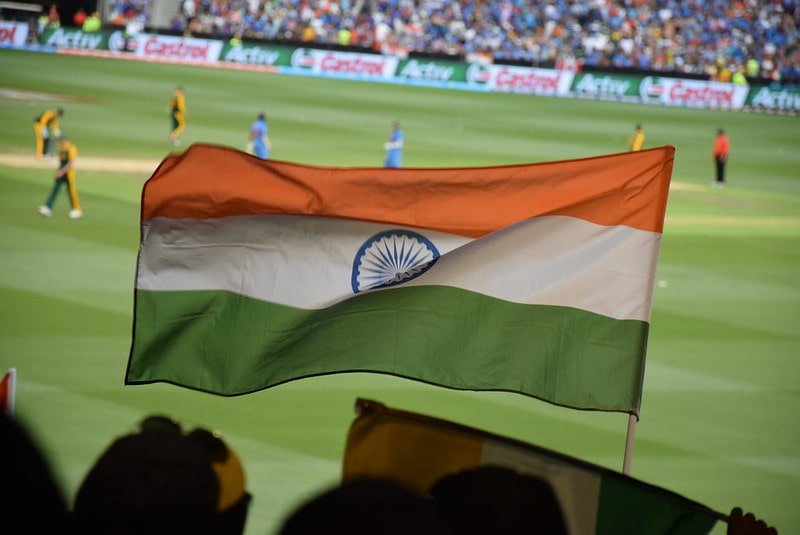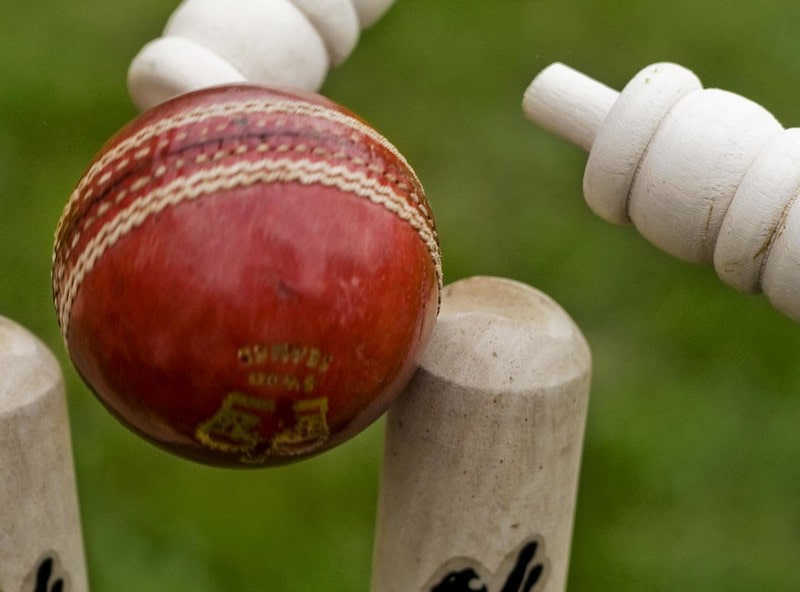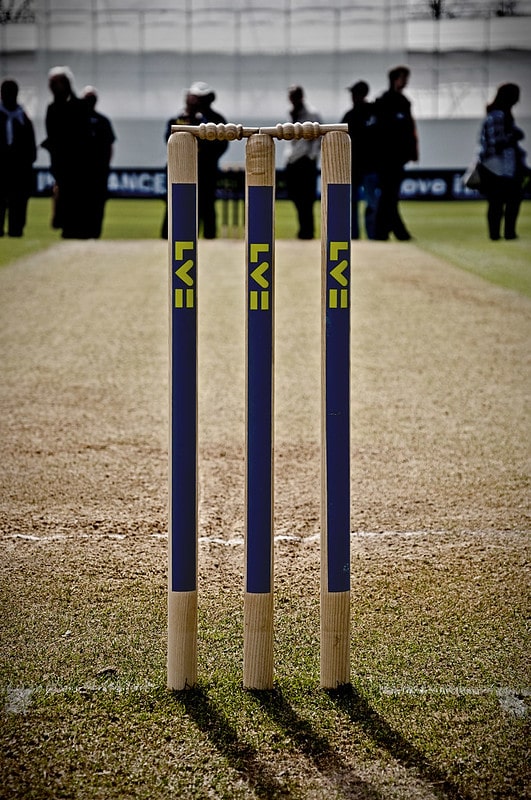Last updated on June 20th, 2023
Cricket is a sport played by millions and watched by billions on TV. Here with these 61 interesting facts about Cricket, let us know more about the game’s history, players, rules, and much more.
1. Cricket is a popular sport – so popular that it is considered the second most-loved sport in the world. It is enjoyed by more than 2.5 billion fans in 180 countries. This sport is most popular in England, Australia, and subcontinental Asia (especially India and Pakistan).
2. Cricket has its roots in the early 16th century. However, the first written rules for the game of cricket were penned in 1728 by Alan Brodick and the Duke of Richmond.
3. Cricket was originally a children’s game played in England during the 16th century, specifically in the southeastern counties. When the British expanded overseas, they brought the game with them.
4. The man considered as the father of cricket is William Gilbert (W.G.) Grace. He played amateur cricket in England and is credited for helping develop the sport into the modern obsession that it has become.
5. The first Test cricket captains for the English team were James Lillywhite and David Gregory. Of the two, Lillywhite was the first to play. He died in 1929, becoming the last player of the very first Test match to pass away.
6. Cricket is played in several formats but the three major forms are: Twenty20, One-Day Internationals (ODI), and Test matches. Of these, the Test match is the traditional form, having been used since 1877. It is also considered the highest level.
7. The first ever test match was played between Australia and England on India. The game was played at the Melbourne Cricket Grounds in Australia.
8. Although there are 31 countries that play cricket in the international stage, only 12 have qualified for Test status. The first countries to acquire this status are England and Australia (1877) and the latest is Afghanistan (2018).
9. The biggest event in cricket is the World Cup, which is organized by the International Cricket Council (ICC). It was founded in 1909 as the Imperial Cricket Conference. The three founding countries include England, South Africa, and Australia.

10. The oldest cricket world championship is the ICC Women’s Cricket World Cup. The first tournament, which was hosted by England, was held in 1973. The English team was champion of the first edition.
11. The first cricket World Cup was held in 1975, participated in by the men’s teams. The title was won by the West Indies, with Australia placing second.
12. The country with the most losses in International Cricket is England, having played 691 unsuccessful matches. They have also played the most games (1,885).
13. The cricket pitch is 20.12 meters (22 yards) in length and 3.05 meters (3.33 yards) in width. The length of 22 yards is considered a chain, which was used as a standard of measurement for land during the 18th century.
The chain is 1/10th of a unit of measurement called furlong, which is the average length of land that a team of workers could plough in one day.
14. Non-turf pitches are 17.68 meters long and 1.83 meters wide.
15. The surface of the cricket pitch may be covered by very short grass and must be flat. In some venues, the playing surface may be made of artificial material or even dry soil.
The pitch is never altered or repaired during a game as long as the wear is considered normal. Only during special circumstances is the pitch repaired.
16. The condition of the cricket pitch may change the strategy of a team. If the ground is dry, the best bowl would be the spin, which means the team’s top spin bowlers should be chosen for the job because their skill will give their team a significant advantage.
17. The cricket ball weighs 163 grams. Its core is made of cork which is wrapped with several layers of yarn. The outer casing is made of leather, which is then coated with lacquer.
18. A cricket ball’s circumference must measure between 22.4 and 22.9 centimeters.

19. The small gates through which cricket balls must pass through are called “wickets”. The term is used due to the similarity of the stumps to wicket gates, which are small pedestrian gates or doors.
20. The original cricket wickets used only two stumps over which a bail is attached. This design was changed in 1775 after an English cricketer, Lumpy Stevens, was able to bowl three consecutive balls that shot clear between the stumps. This is why modern wickets have three stumps instead of just two.

21. Bails, the horizontal pegs that sit on top of the stumps, are not attached to the top surface. Instead, they rest on shallow grooves on the free ends of the stumps.
Bails are critical for determining if the wicket has been put down or broken. This in turn will help identify the status of the batsman, if he has been run out, out bowled, or stumped.
22. In case of windy conditions during a match, the umpires may decide to have the bails removed to avoid having them blown off. They may also be replaced by heavier bails to keep them secure on the stumps.
Although the bails may not be present, they are assumed to still be on the stump. It will then be up to the umpires to decide if the wicket had been broken or not.
23. The term “wicket” is used multiple times in cricket. Getting a wicket is dismissing a batsman. Losing a wicket is getting dismissed. A bowler who dismisses a batsman is said to take a wicket.
Sometimes, a cricket pitch is called a wicket, although this is considered incorrect by the Laws of Cricket. Regardless, it is still being used, especially by commentators.
24. Women had been playing cricket as far back as the 1700s. Villages in Surrey, Sussex, and Hampshire held their own local and inter-village tournaments. Prizes for the games included lace gloves and barrels of ale.
25. England, hosts of 5 Cricket World Cups, have never won a World Cup title. They were also the hosts of the first 3 World Cup events after cricket became an international recognised sport.
26. The roundarm action used for throwing the ball was used prior to the overarm throw used today. Prior to its conception, the underarm throw was used. The roundarm throw was conceived by English cricketer Tom Walker during the 1790s.
Some insiders credit a woman, Christiana Willes to have devised the roundarm style. Wearing the bulky dresses of her time, Willes found the underarm throw difficult and inaccurate and decided to change it.
27. The fastest cricket pitch ever recorded was thrown by Shoaib Akhtar during the 2003 Cricket World Cup. He clocked in at 100.23 mph (161.3 km/h) during a match with England.
Akhtar’s feat made him the first cricket bowler to reach 100 mph and he did this twice during his storied career. He earned the nickname “The Rawalpindi Express” for his impressive pitches.

28. India and Pakistan are considered the biggest rivals in cricket. This sports feud is supposed to have begun in 1947 after Pakistan became independent from India. The rivalry is good for viewership, however.
It is estimated that around 300 million people from different countries would tune in to watch the two nation’s intense matches.
29. Although cricket is a non-contact sport, players still experience injuries during a game, some of which are career-ending or even fatal. The first known player to have a deadly accident while playing cricket is Jasper Vinall of England. He was hit by a bat on the forehead and died two weeks later.
30. A freak accident ended the life of a promising young batsman from India in 2015. Ankit Keshri was captain of the Bengal U-19 team. Keshri collided at full-force with teammate Sourav Mondal when they both ran to catch the ball. Although he was hospitalized after the incident, he later died of a heart attack during treatment.
31. Alec Stewart, OBE had a batting average of 39.54. This is the lowest for a player who has scored at least 8000 runs. Stewart holds a score of 8,463 Test runs. This figure is significant because Stewart was born on April 8, 1963 (8/4/63).
He is also the cricketer with the highest Test runs who does not have a career double history.
32. The cricket bat has been a source of controversy in cricket. In 1771, one player attempted to breach the rules. Thomas White, an English cricketer, took his turn with a bat that was as wide as the wickets in the field. This ensured better defense and gave Thomas an unfair advantage.
A protest by the opposing team ensued which later led to a change in cricket laws in 1774, setting the bat width to no more than 4.25 inches.
33. Muttiah Muralitharan holds the record for the most wickets in ODI cricket (534) and the most number of Test wickets (800). Murali is the only cricketer to capture over 100 Test wickets at three events. He has also been awarded the most number of Man of the Series in Test cricket.
34. The oldest cricketer to play the game is England’s Wilfred Rhodes while the oldest living Test cricketer is South Africa’s John Watkins. Rhodes was 52 years old while Watkins (born 1923) is in his late 90s.
Rhodes also holds a distinction in first class cricket, taking down over 4,000 wickets.
35. The Man of the Match title is awarded to the player who has contributed the most to make the best impact in a match or series. This title was first used in cricket and can be awarded to any player, whether his team has won or not.
The only cricketer to have won the title four consecutive times is Sourav Chandidas Ganguly. The left-handed Dada played for the national team of India.

36. A score of 100 runs by a batsman is called a “century”. It is one of the most sought-after levels of achievements in the sport. The first century ever scored was made by Australia’s Charlie Bannerman.
37. The Nelson is a term used to refer to a score of 111 by an individual player or a team. This is also used for multiples of 111, such as 222 (double Nelson), 333 (triple Nelson), and so on.
The Nelson is considered unlucky because the number 111 is similar in appearance to a bail-less wicket. Players and fans believe that something bad or unlucky would occur when a player or team reaches that score.
38. Although the Nelson is feared by some players, there is no solid evidence that it is actually inauspicious. Regardless, some people choose to take precautions. Umpire and former cricketer David Shepherd would lift one leg up when it is a bowler’s turn to run in to bowl and the score is at 111. Fans would cheer him on when he did this.
39. At no other time was the unluckiness of the Nelson so dreaded as during a match between Australia and South Africa. The time was 11:11 and South Africa needed 111 runs to beat Australia. The date was November 11, 2011. The umpire and most of the crowd performed the David Shepherd leg raise for a minute as the scoreboard read: 11:11, 11/11/11. South Africa bested Australia by 8 wickets.
40. Among Australian players and fans, the score considered unlucky is 87. They call it the Devil’s number because 87 deducted from 100 is 13.
41. Still on the subject of cricket superstitions, the player with the most rituals performed during a match is arguably Neil McKenzie of South Africa.
Before a game, for example, he would attach his cricket bat to the ceiling with tape. When it’s time for him to bat, he would check all the changing room lights to make sure they were shut off and that the toilet seats were down.
42. England is the first country to play 1,000 Test matches. They reached this milestone at Edgbaston in Birmingham in August 2018 against India. England won the series 4-1.
43. The highest-paid cricketer is India’s Virat Kohli. The New Delhi native is currently captain of the national team. Chikoo earns $4 million a year but rakes in an estimated $24 million in endorsements. He receives sponsorship deals from Audi, Google, Flipkart, and Puma. He is also the sole cricketer to land on Forbes’ list of highest-paid athletes in 2020.
44. Some of the sports’ most loyal fans consider cricket their religion – and they have a god. His name is Sachin Tendulkar. Although there are cricketers with excellent numbers, Tendulkar’s fans may have a point.
Over his 24-year long career, he has notched 34,357 runs, averaged 51.74 half-centuries in 664 international matches, and has achieved 100 centuries.
He also holds the record for the most runs in ODIs – a whopping 18,426! This, along with his charisma, earned him the nickname, God of Cricket.

45. The most common physical injuries among cricketers is a hamstring strain. This occurs among players in this sport due to sudden bursts of movement required in the game. Cricketers often stand still for long periods before they run or bowl. A hamstring strain also occurs due to overuse of muscles and joints.
46. Australia’s Donald Bradman (The Don) is considered the greatest batsman of all time. He has an unmatched 99.94 Test batting average – the best performance among all other players in all sports. Many fans believe there will never be another player like him.
47. The winningest cricket captain is Australia’s Ricky Ponting (served 2002-2012). During his time with the Australian team, he was instrumental in clinching 220 wins. His win rate is an impressive 67.90.
48. Cricket became an Olympic sport in 1896. However, no matches were held because there was an insufficient number of teams who attended. Had the sport been played that year, cricket would have earned the distinction of being the only team sport to be played at the time.
The first Olympic match in the next Olympics (1900) was participated in by the men’s teams. Great Britain (represented by the Devon and Somerset Wanderers) won gold.
. . . continue reading on the next page
